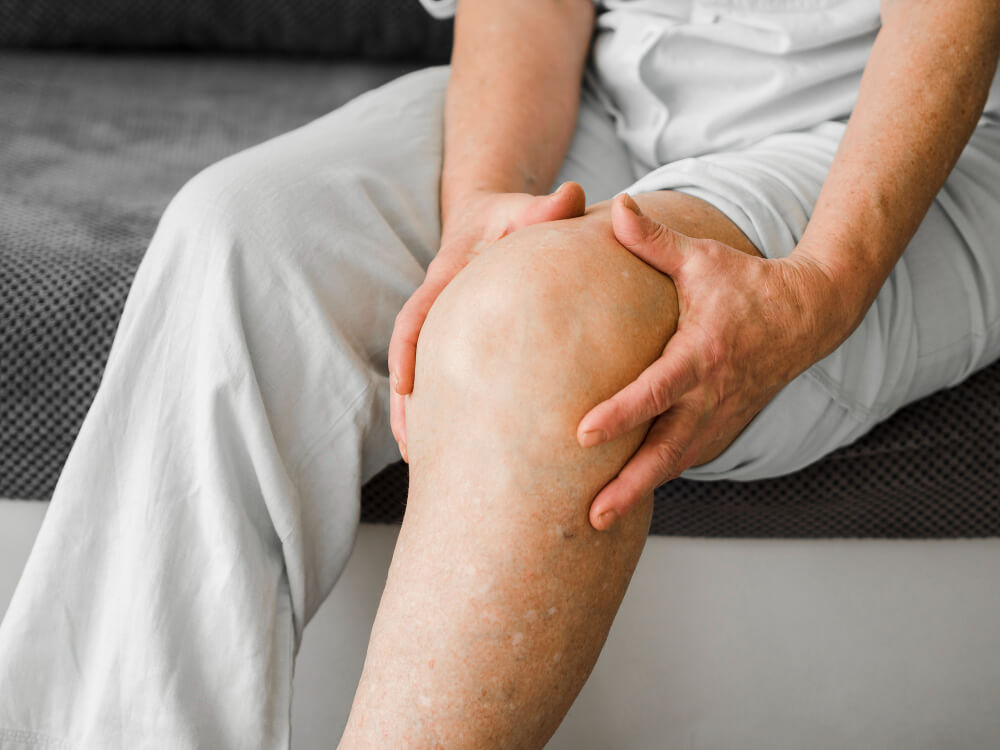Weight Loss for Knee Pain: Feel Better, Move Easier
Those daily aches and twinges in your knees can put a damper on even the simplest activities. Carrying extra weight can significantly strain your knee joints, leading to pain, stiffness, and reduced mobility. But there’s good news! “Weight Loss for Knee Pain: Feel Better, Move Easier” explores the powerful connection between weight loss and knee health. This informative guide will equip you with the knowledge and tools to shed excess pounds, reduce knee strain, and rediscover the joy of pain-free movement.

Understanding the Link: Weight Loss and Knee Pain Relief
Our knees are complex joints that bear a significant amount of weight throughout the day. Every extra pound you carry translates to additional stress on your knee joints with each step. Over time, this excess load can contribute to:
- Increased Wear and Tear: The cartilage that cushions your knee joint can wear down prematurely due to the constant strain.
- Inflammation: The extra weight can lead to inflammation in and around the knee joint, causing pain and swelling.
- Osteoarthritis: Carrying extra weight is a significant risk factor for osteoarthritis, a degenerative joint disease that causes pain, stiffness, and loss of function.
The good news is that even a modest amount of weight loss can make a big difference in your knee health. Studies have shown that losing as little as 5-10% of your body weight can significantly reduce knee pain and improve joint function.
Developing a Safe and Sustainable Weight Loss Plan
Shedding pounds for knee health requires a safe and sustainable approach. Here are some key strategies to consider:
- Consult with a Doctor or Registered Dietitian: They can assess your health history, weight loss goals, and recommend a personalized plan tailored to your needs.
- Focus on a Balanced Diet: Prioritize whole, unprocessed foods like fruits, vegetables, whole grains, and lean protein. These foods provide essential nutrients for your body and promote satiety, helping you manage your calorie intake.
- Limit Processed Foods, Sugary Drinks, and Unhealthy Fats: These foods are often high in calories and offer minimal nutritional value. Replacing them with healthier options can contribute to weight loss and overall health.
- Practice Portion Control: Be mindful of how much you eat. Use smaller plates to avoid overeating and track your calorie intake using a food journal or app.
- Stay Hydrated: Drinking plenty of water helps your body function optimally and can help you feel full, potentially reducing calorie intake.
Remember: Weight loss is a journey, not a race. Set realistic goals and celebrate your progress along the way.
Beyond Weight Loss: Additional Tips for Knee Pain Management

While weight loss is a powerful tool for knee pain relief, it’s not the only solution. Here are some additional strategies to consider:
- Low-Impact Exercise: Regular exercise is crucial for maintaining joint health, but high-impact activities like running or jumping can put stress on your knees. Opt for low-impact exercises like swimming, walking, water aerobics, or cycling.
- Strength Training: Building muscle strength around your knees provides additional support and stability, reducing the strain on the joint. Exercises like squats, lunges, and calf raises are excellent options.
- Physical Therapy: A physical therapist can assess your individual needs and create a personalized exercise program to strengthen your muscles, improve flexibility, and reduce pain.
- Supportive Gear: Using supportive shoes with good cushioning can make a difference in daily activities. Exploring options like knee braces or sleeves for added support can be discussed with your doctor.
- Heat and Ice Therapy: Applying heat to stiff joints first thing in the morning can help improve flexibility, while ice packs can help reduce inflammation after exercise.
Remember: Consistency is key. By incorporating these strategies into your routine, you’ll be well on your way to managing your knee pain and improving your overall mobility.
By embracing a combination of weight loss, exercise, and other pain management techniques, you can significantly improve your knee health. Remember, the journey starts with a single step – take control of your weight and rediscover the joy of pain-free movement!
